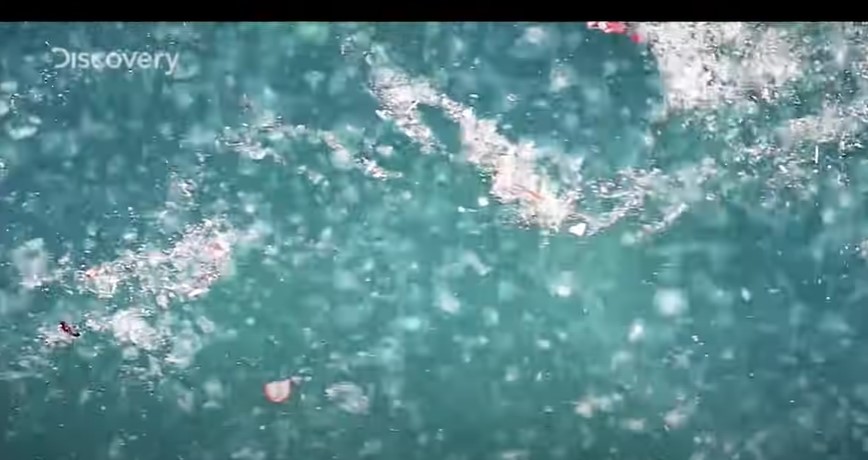In the 1969 classic, “The Graduate”, young Benjamin Braddock (played by Dustin Hoffman) is pulled aside by Mr. McGuire, one his father’s friends and given some unforgettable advice about his future: “Plastics”, he says, “….there’s a great future in plastics”.
It seems hard to believe now that there was a time when plastic didn’t rule our lives, but the fact is that 9.2 billion tons of plastic are estimated to have been made between 1950 and 2017, more than half produced since 2004.
It can be molded, extruded or pressed into solid objects of various shapes. It’s lightweight, durable, flexible and inexpensive to produce. For all these reasons, it’s everywhere: in our industry, in our homes, and now in abundant quantities in our waterways and air. In short, while its list of positive attributes makes it a miracle product, its ubiquity and durability make it an environmental and ecological nightmare. The Great Pacific Garbage Patch–a term coined by Charles J. Moore in 1997–covers an estimated surface area of 1.6 million square kilometers in the North Pacific Ocean, an area three times the size of France and consists of debris and plastic that has entered the waterways and found its way into the oceans.

While we think of plastic as being disposable–indeed that is one of its main attractions– plastic is non-biodegradable and once its journey starts at your local beach or river, it will continue on its way for centuries, propelled by the currents. For example, “a plastic water bottle discarded off the coast of California…takes the California Current south toward Mexico. There, it may catch the North Equatorial Current, which crosses the vast Pacific. Near the coast of Japan, the bottle may travel north on the powerful Kuroshiro Current. Finally, the bottle travels eastward on the North Pacific Current. The gently rolling vortexes of the Eastern and Western Garbage Patches gradually draw in the bottle.” Non-biodegradable means that plastic is forever. It means clogged waterways, clogged digestive tracts in marine animals, fish tangled in its gyres, river banks draped to a depth of meters, beaches with mountains of washed-up bottles, bags and containers of all types.
The image conjured up by “garbage patch” is of a vast mat of debris and plastic objects. However, that is not the case. Even satellite imagery doesn’t show an island of plastic; this is because larger plastic objects are chipped down by the environment into ever smaller bits, and become so-called microplastic. Some is not even visible to the naked eye.

Unfortunately, however, whether visible or not—or perhaps precisely because that which is not visible is more damaging–microplastics is even more dangerous and insidious, you need to imagine the minute particles surrounding you in the atmosphere, in your room, in your kitchen, and in your food in order to get a mental picture of its omnipresence as it moves up and down the biological chain. Now for the first time, scientists have found microplastics in human blood.
I’d like to say that this is the proverbial canary in the coal mine, the first warning of impending disaster, but the truth is that the figurative canary died in the coal mine a long time ago and no one heeded the warning. Scientists saw this coming, and yet we have just ignored it. Now that we have actual evidence of microplastics in human blood, can we perhaps reflect on all those friends, relatives and neighbors of ours who are battling cancer? All those children and old people gasping with asthma?

Microplastics is a known carcinogen; in the laboratory, it has been observed to cause damage to human cells at the same levels known to be ingested by people via their food, a study has found. It causes cell death and allergic reactions. Prime culprits are our plastic water bottles and food containers. If then we also heat the plastic in our microwave ovens, it only makes matters worse.
There is no escape from microplastics. The study that reported its presence in human blood, released on March 22, 2022, emphasizes that, “The tiny pieces of mostly invisible plastic have already been found almost everywhere else on Earth, from the deepest oceans to the highest mountains as well as in the air, soil and food chain.”
The Dutch study published in the Environment International journal examined blood samples from 22 anonymous, healthy volunteers and found microplastics in nearly 80 percent of them. Half of the blood samples showed traces of PET plastic which is widely used to make drink bottles, and more than a third had polystyrene, used for disposable food containers and many other products. Dick Vethaak, an ecotoxicologist at Vrije Universiteit Amsterdam, stated that this is the first time that researchers have been able to quantify its presence in human blood and that, “This is proof that we have plastics in our body—and we shouldn’t…”

The compelling questions that they are now asking are: “Where is it going in your body? Can it be eliminated? Excreted? Or is it retained in certain organs, accumulating maybe, or is it even able to pass the blood-brain barrier?”
Current theories suggest that the particles don’t enter our bodies only through the air, water or food, but also in products such as particular toothpastes, lip glosses and tattoo ink. Much further research is needed before we can answer the important questions, but one thing we know for sure, that we now have incontrovertible proof that that “plastic particles have not just pervaded throughout the environment, but are pervading our bodies too.” If before we didn’t care enough about our rivers and oceans to make some crucial lifestyle changes, maybe now we care more about another river of life: our own blood.











